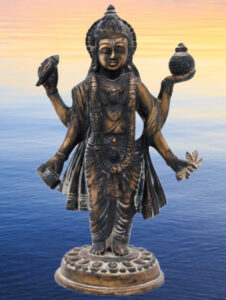Summary of basic Concepts
 The Sanskrit word Ayurveda can be translated as “the knowledge of long life”.
The Sanskrit word Ayurveda can be translated as “the knowledge of long life”.
Ayurveda is a comprehensive system of holistic medicine offering a wide range of modalities. Ayurveda dates back over 5,000 years, making it the oldest science of health, and is said to be the foundation of all other health systems.
Ayurveda can help to prevent and treat illness, maintain health, increase longevity and quality of life. Ayurveda empowers individuals to take control of their own health.
Modalities include lifestyle recommendations, nutrition, herbal formulas, five senses therapies, yoga, meditation and multiple hands-on treatments. Ayurveda is also the mother of anti-aging and rejuvenation therapies. Rasayanas are remedies including herbs designed to rejuvenate the mind and body.
Disorders such as stress, fatigue, anxiety, depression, arthritis, chronic pain, skin disorders, digestive problems, obesity, heart disease, immune dysfunctions and nervous disorders can all benefit from Ayurveda.
The 5 Elements
Our bodies and everything in the universe are made up of 5 elements; space, air, fire, water and earth. The five primary elements manifest in different ratios in each individual, giving us our unique physical and mental constitution called dosha.

Doshas- the three Energies of the Body
The three doshas are Vata (space and air), Pitta (fire and water), and Kapha (earth and water). Dosha means, „That which goes out of balance,“ and when excess dosha accumulates illness can manifest. Ayurveda defines the state of health where doshas (vata, pitta, kapha) and the digestive fire (agni) are in balance. It also acknowledges the wholeness of mind, body and spirit.
Vata (air+ space)
Vata manifests as the principle of movement in the body; it directs nerve impulses, circulation, respiration and elimination. Colon, pelvic girdle, and thighs are governed by Vata.
Pitta (fire+water)
Pitta is the process of transformation and metabolism in the digestive system. It also regulates cellular metabolism and transformation of foods into nutrients. Small intestine, liver, gallbladder, spleen and blood are governed by Pitta.
Kapha (earth+water)
Kapha governs growth and structure of the body (bones). Cerebral fluid in the brain and spinal column and mucous lining of the organs are also Kapha functions. Lungs, stomach, pancreas and sinuses are governed by Kapha.
Attributes of the Doshas
The 5 basic elements in the universe are expressed through the attributes of the Doshas. The way we experience the qualities of each dosha helps us understand function, cause and effect. Ayurvedic, Chinese and Tibetan Medicine treat imbalances with the opposite attribute. For example imbalanced Vata dosha may cause constipation due to cold, rough and dry quality in the colon. This imbalance is remedied with warm, smooth and oily foods and herbs to soothe the agitated Vata in the colon.
- Vata (air & space): dry, light, cold, rough, subtle, mobile, clear
- Pitta (fire & water): oily, sharp, penetrating, hot, light, mobile, liquid
- Kapha (earth & water): heavy, slow, cold, oily, slimy, smooth, dense, soft, static, stable, cloudy
Agni- Digestive Fire
This biological fire governs digestion and absorption of food, metabolism, cellular transformations and mental capacity. Strength of Agni determines digestive power and is closely related to pitta dosha. A balanced Agni is essential for health and vitality. Physical strength and disease resistance are directly related to heat Agni and the metabolic processes. Weakened Agni is a main cause of disease. Symptoms of low Agni can include feeling of heaviness, gas, bloating, indigestion, constipation or loose stools.
The 7 Dhatus (tissues)
- Rasa– plasma, white blood cell function; immune system. Example of a disorder: lymphatic congestion.
- Rakta– red blood cell function; oxygenation. Example of a disorder in the rakta: anemia
- Mamsa– muscle function; strength, protects organs and joints. Example of a disorder: muscular atrophy
- Meda-fat function; insulates body heat, lubricates tissues. Example of a disorder: obesity
- Asthi– bone, cartilage gives structure to body. Example of a disorder: osteoporosis
- Majja– bone marrow function; nerve and sensory impulses, cellular communication. Example of a disorder: multiple sclerosis
- Shukra-(male) reproductive tract function; procreation. Example of a disorder: impotence
- Artava– (female) reproductive tract function; holds essence of all tissues. Example of a disorder: infertility
Ama- Toxins
Ama in the body is a result of weakened Agni (digestive fire). Undigested food accumulates in the tissues. Incompatible diet and lifestyle, physiological, emotional stress, trauma, environmental pollution and drugs create toxins on a cellular level.
Panchakarma cleansing and rejuvenating therapy is unique to Ayurveda. These therapies eliminate excess Doshas and Ama (toxins) from the physical and mental body. This improves overall health and strengthens the immune system, promoting longevity and vitality. In theory, it takes at least one day to reach each of the seven types of tissues. Thus one week of Panchakarma is recommended for most people.
Dinacharya (daily rhythm)
Ayurveda advocates living in tune with the cycles of nature in order to stay balanced. There is an optimum time of day for activities such as eating, exercising and sleeping that correspond to the body’s internal rhythms. Diet and lifestyle choices are also adjusted with each season. The Doshas are also attributed to certain times of the day, to the yearly seasons, as well as to cycles of life.